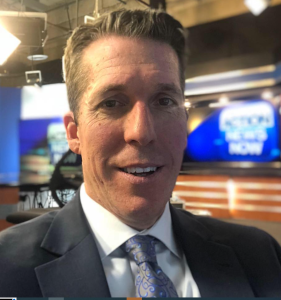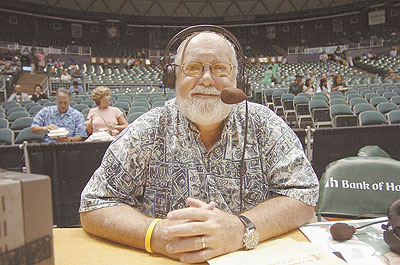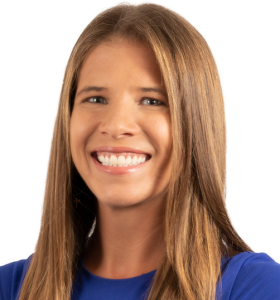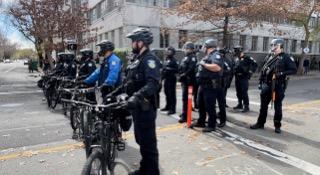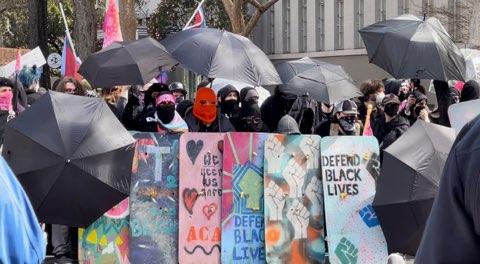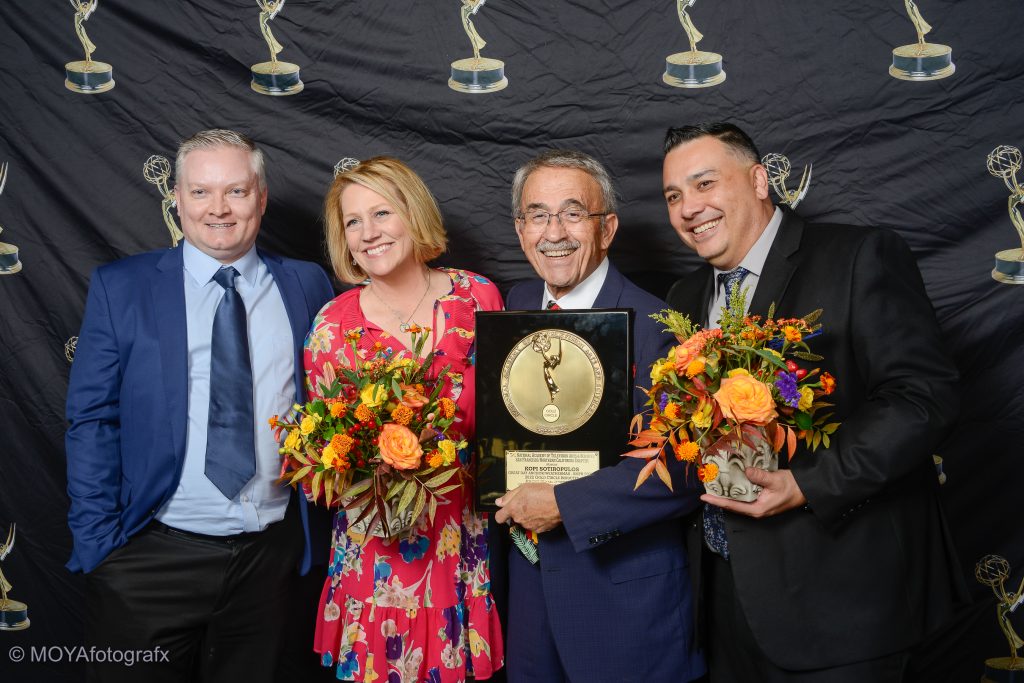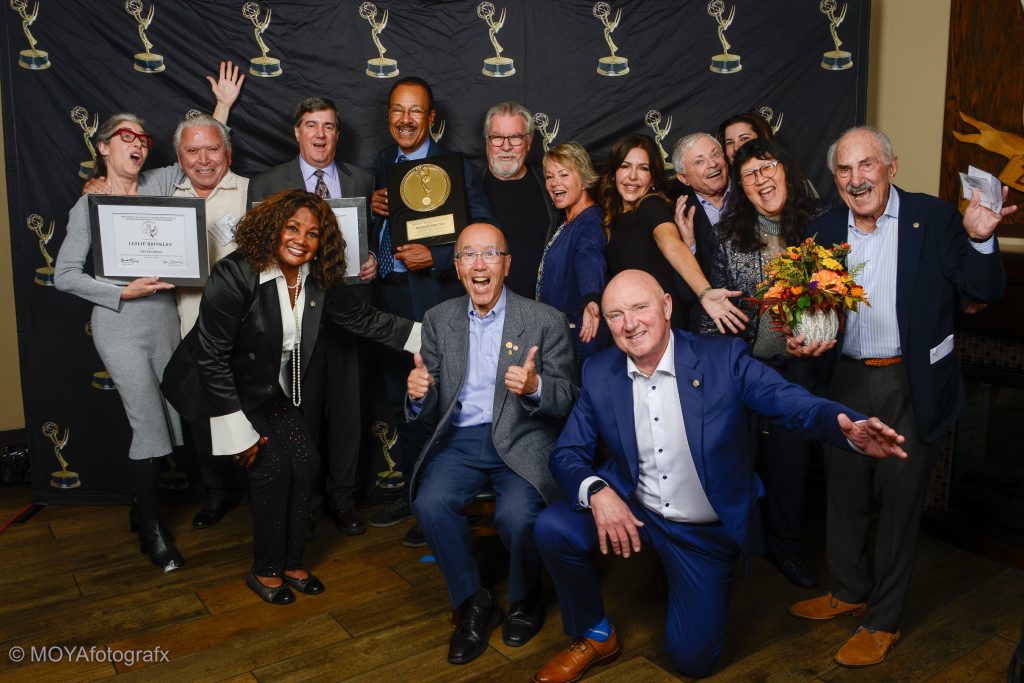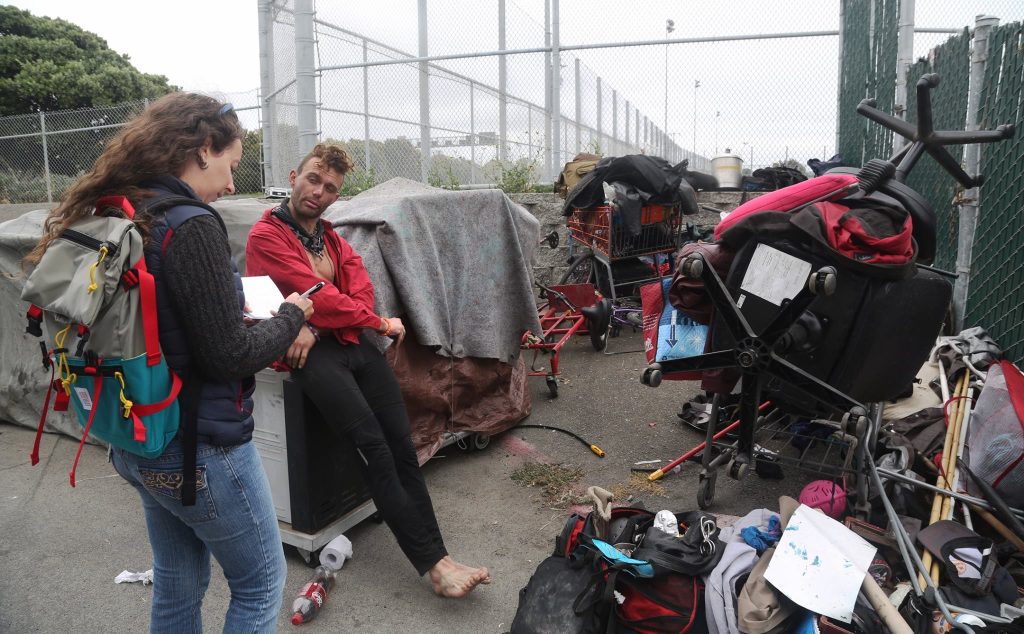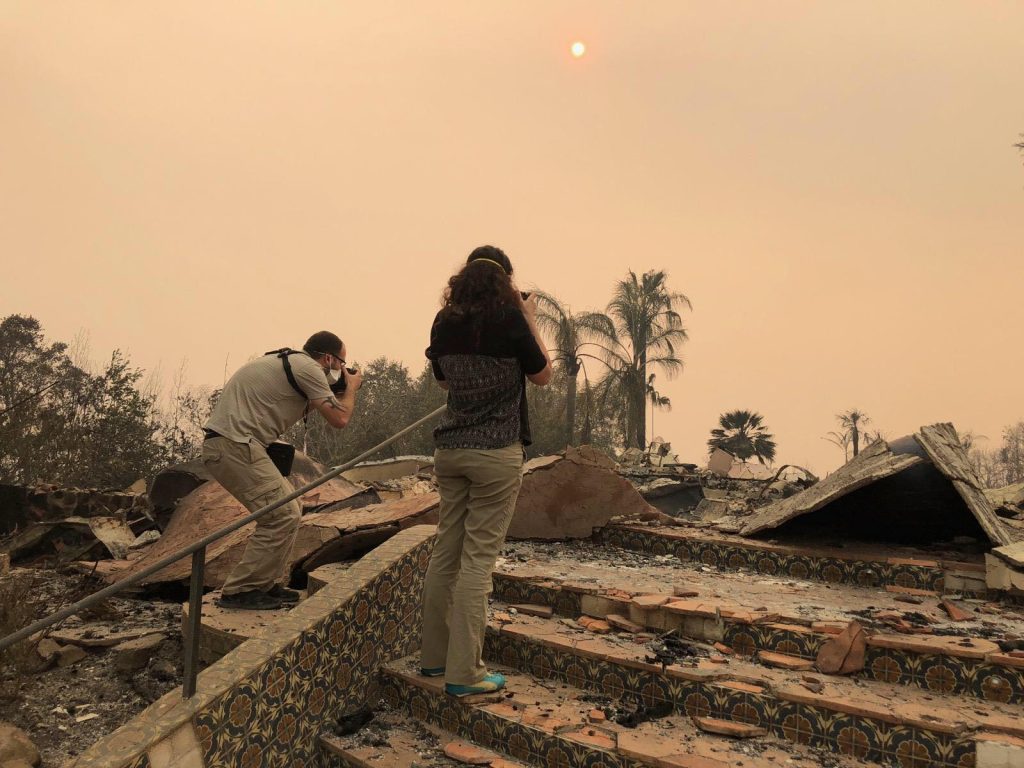The MMJ Life
By Kris Sanchez
Awards Committee Vice-Chair, Spanish Contest
During last week’s stormy weather, I got my first taste of the MMJ (Multimedia Journalist) life…kind of. Before my photographer and I could meet up for our morning news live shots, his microwave truck got stuck in the mud and because of the weight, it would be hours before he could get unstuck.
That’s when my Executive Producer asked me to improvise. So, using my work phone and my personal phone, a tiny tripod atop the roof of my car, a LumeCube light and the $25 microphone I used during the pandemic’s work-from-home days, and the Dejero app, I made air. It felt like a bit of a miracle.
Now, this was likely a one-time thing for me, but it really made me appreciate what our one-man-band colleagues do every day. In our chapter’s Emmy® contest this year, we certified 37 MMJ entries; 27 in the English contest and seven in the Spanish contest. The Call for Entries specifies that Emmy awards for Multi-Media Journalists are “for excellence by a cross-discipline individual serving as photojournalist, editor, talent, and writer.” That means no other person can do anything. Nothing. But, during the Emmy certification process, some of the MMJ entries were so slick, as a certifier, I had to reach out to ask, “how did you do that all by yourself?”
Because the contest is out for judging, I won’t identify the entrants, but I will just give you some of the explanations that I got.
One MMJ told me: “I left the camera on the tripod and recorded the video and then in post-production, I added a movement in Edius to zoom in or track my movements.”
Another told me: “The moving shots were done with a Gimble, using an app that tracks my face” regarding one standup, and regarding another, “I put the camera on a tripod, then zoomed in using Premiere and added a wrap stabilizer effect.”
Flying solo definitely requires creativity, skill, and focus. I wanted to get some MMJ tips and strategies, so I reached out to Kiet Do. He has four NorCal Emmys for his work as an MMJ with CBS Bay Area KPIX but will no longer be competing in this category as he’s left news.
Here are some of Kiet’s strategies:
-Prioritize “must have,” “nice to have,” and “luxury have” elements because every decision costs time.
-Shoot efficiently to reduce logging and editing time; pre-interview off-camera for basic facts, save on-camera interviews for emotional reaction.
-Focus on real people first; experts or officials second.
-Put the who/what/when/where/why in the anchor toss so you can focus storytelling and/or analysis.
-Think about where you’ll write and edit early to make sure you have a strong cell signal, a bathroom and food nearby.
Some of Kiet’s favorite tools:
-iPhone: small, quick, portable, waterproof, low-profile, image stabilization.
-Knee-high, steel-toe rubber boots: allows safe access in weather, fire scenes, encampments.
-Otter.ai: audio transcription.
-Google Maps Offline mode: allows navigation with GPS in areas with no cell coverage.
-Drone: study up and get the FAA pilot license; you won’t regret it.
We can’t talk about MMJ’s and one-man-bands without talking about safety. In recent years, we’ve seen colleagues harassed, robbed, and in 2022, one reporter was hit by a car while working alone.
Some stations have banned solo live shots and enacted other safety measures, but there’s always room for improvement. Your safety should always come first.
Here’s a link to the call for entries, if you want to see the language of the MMJ contest: https://emmysf.tv/awards-2-2/call-for-entries/.


